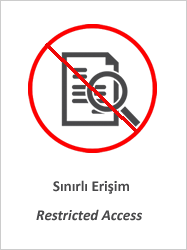The Architecture of Visual Narrative: Can Text-to-image Algorithms Enhance The Power of Stylistic Narrative for Architecture
Künye
DİLAVEROĞLU, Büşra. "The Architecture of Visual Narrative: Can Text-to-image Algorithms Enhance The Power of Stylistic Narrative for Architecture." International Journal of Architectural Computing, (2024): 1-16.Özet
Architecture has always been a means of communicating stories through its design, with its structures and
spaces serving as visual narratives. However, recent advancements in technology have created opportunities
for architects to enhance their storytelling capabilities through the use of text-to-image algorithms. These
algorithms have the potential to improve visual narratives by enabling architects to translate written descriptions
into tangible visual representations. This article explores the architecture of visual narrative and
how text-to-image algorithms can enhance it in diverse styles. This inquiry aims to help architectural
epistemology understand and foresee the potential impact of this technology on the field of architecture. To
understand the limits of AI in generating styles to enhance architectural narrative, six distinct styles were
chosen for experimentation. The styles were selected based on their unique features, including an architect’s
style, movement, or era. These styles include Zaha Hadid, Brutalist, modern-minimalistic, Peter Zumthor,
Gothic, and Gaudi. The narrative was kept the same for each style while observing the changes in AIgenerated
visuals. The results were evaluated by comparing AI’s interpretations in terms of stylistic, environmental,
material, form-based, and atmospheric features. While the results showed promise in terms of
variations in each category, AI was not successful in implementing all stylistic features while keeping the
narrative stable. In particular, after the second environment layer, the modern-minimalistic, Zumthor, and
Brutalist styles lost their distinct features, while Gothic and Gaudi-inspired visuals were hardly generated
even in the second environment layer. As a result, AI performed well in generating detailed environmental
features without any given narrative and creating an atmospheric environment with enlightening the environment
for the last layer.



















